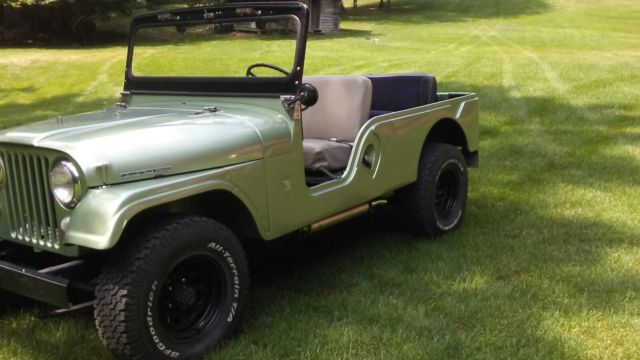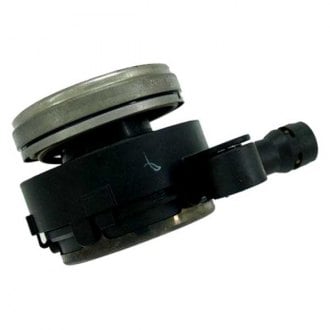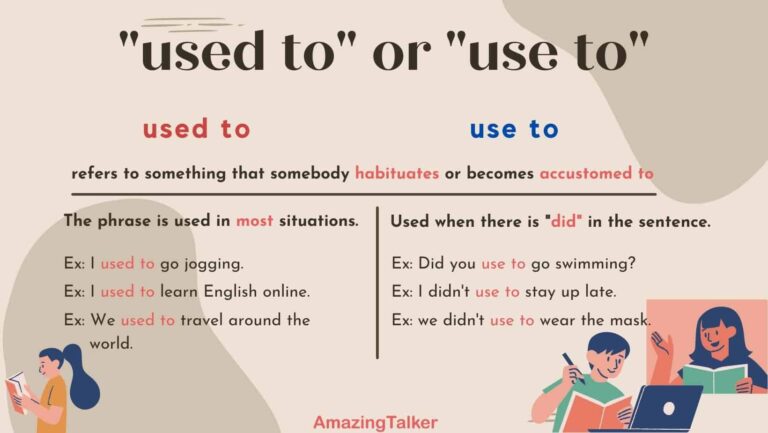Jeep Tuxedo Park For Sale: A Guide to Acquiring a Vintage Icon
Jeep Tuxedo Park For Sale: A Guide to Acquiring a Vintage Icon jeeps.truckstrend.com
The term "Jeep Tuxedo Park For Sale" evokes a specific image for automotive enthusiasts: a classic, often pristine, Willys or Kaiser Jeep CJ-5, adorned with an unexpected touch of elegance. Unlike the rugged, utilitarian Jeeps often seen tackling trails, the Tuxedo Park was an appearance package designed to bring a dash of sophistication to the civilian Jeep line in the 1960s. It represented a pivotal moment in Jeep’s history, as the brand sought to broaden its appeal beyond purely agricultural or military applications, venturing into a more lifestyle-oriented market. For collectors and vintage vehicle aficionados, finding a Jeep Tuxedo Park for sale today is an opportunity to own a unique piece of American automotive heritage – a blend of iconic utility and surprisingly refined aesthetics.
This comprehensive guide will delve into what makes the Tuxedo Park special, how to navigate the market for these vintage treasures, essential considerations before purchase, and what to expect from the ownership experience. Whether you’re a seasoned collector or a first-time vintage vehicle buyer, understanding the nuances of the Jeep Tuxedo Park is crucial to making an informed and satisfying acquisition.
Jeep Tuxedo Park For Sale: A Guide to Acquiring a Vintage Icon
The Allure of the Tuxedo Park: What Makes It Special?
The Tuxedo Park appearance package, primarily offered on the CJ-5 from 1961 to 1967 (though earlier and later iterations on other models exist), was a deliberate effort by Willys-Overland (later Kaiser Jeep) to soften the CJ’s rugged image. During the post-war boom, as suburbanization took hold, there was a growing desire for vehicles that could serve both practical purposes and leisure activities. The standard CJ, while immensely capable, lacked the creature comforts and stylistic flourishes that many civilian buyers sought.
The Tuxedo Park package addressed this by adding a series of upscale features: chrome front and rear bumpers, chrome windshield hinges, chrome hood latches, chrome taillight housings, chrome hubcaps, and often a distinctive chrome side trim strip. Interiors received attention too, with upgraded upholstery, a chrome-ringed steering wheel, and sometimes more refined instrumentation. Specific paint schemes, often two-tone, further distinguished these models. The aim was to make the Jeep feel less like a farm implement and more like a recreational vehicle suitable for a trip to the country club – hence the "Tuxedo Park" moniker, referencing an affluent enclave in New York known for its elegance.
Today, these features make the Tuxedo Park highly desirable. They represent a unique chapter in Jeep’s evolution, showcasing an early attempt to blend the brand’s legendary off-road prowess with a burgeoning civilian lifestyle market. Their relative rarity, combined with their distinctive aesthetic, ensures they stand out at any car show and remain a cherished item for collectors.
Identifying an Authentic Tuxedo Park Jeep
When searching for a "Jeep Tuxedo Park For Sale," authenticity is paramount. While many vintage CJs might be customized with chrome accessories, a true Tuxedo Park unit left the factory with specific cosmetic enhancements.
Key Identification Features:
- Model & Year: Primarily look for Kaiser Jeep CJ-5 models from 1961 to 1967. While some earlier Willys CJ-3Bs and even Wagoneers occasionally sported "Tuxedo Park" badging or similar upscale trim, the CJ-5 is the most common and recognized application.
- Exterior Trim:
- Chrome Bumpers: Both front and rear.
- Chrome Windshield Hinges and Hood Latches: A clear giveaway.
- Chrome Taillight Bezels: Surrounding the rear lights.
- Chrome Hubcaps: Often with a specific design.
- Side Trim: A distinctive chrome strip running along the side, sometimes with a contrasting paint insert.
- Badging: Look for "Tuxedo Park" badging, though this can be reproduced.

- Interior Details:
- Steering Wheel: Often a specific design with a chrome horn ring.
- Upholstery: While often replaced, original Tuxedo Park models had more refined, sometimes two-tone, seats.
- Dash Trim: Subtle chrome accents around gauges.
- VIN/Data Plate: While specific VIN decoding for Tuxedo Park packages can be challenging due to limited surviving records, original build sheets or data plates (if present and legible) might indicate special trim codes. Researching the specific year’s factory options is crucial.


Be wary of "tribute" or "restored" models that have merely had chrome parts added. While these can be attractive, they won’t command the same value as a genuine factory Tuxedo Park. A thorough inspection and cross-referencing features with period correct documentation are essential.
Where to Find a Jeep Tuxedo Park For Sale
Finding a genuine Jeep Tuxedo Park for sale requires patience and knowing where to look. These aren’t vehicles you’ll typically find on mainstream used car lots.
- Online Classic Car Marketplaces: Websites like Hemmings, Bring a Trailer, ClassicCars.com, and eBay Motors (specifically their classic car section) are prime hunting grounds. They often feature detailed listings and extensive photo galleries.
- Specialty Forums & Clubs: Vintage Jeep owner forums (e.g., EarlyCJ5.com, CJ-3B.info) and clubs are invaluable resources. Members often know of vehicles for sale within their community, sometimes before they hit public listings.
- Classic Car Dealerships: Some dealerships specialize in vintage American vehicles and may occasionally have a Tuxedo Park in their inventory.
- Auctions: Prestigious auction houses like Mecum Auctions and Barrett-Jackson occasionally feature well-restored or original examples. Be prepared for competitive bidding.
- Word-of-Mouth & Car Shows: Attending vintage Jeep events, classic car shows, and engaging with the community can lead to private sales.
Key Considerations Before Buying
Acquiring a vintage Jeep Tuxedo Park is a significant investment that requires careful due diligence.
- Condition is King:
- Rust: This is the arch-nemesis of vintage Jeeps. Inspect the frame, floor pans, body mounts, and inner fenders meticulously. Surface rust is manageable; structural rust is a major red flag.
- Mechanical Soundness: Check the engine (Willys Hurricane F-Head or Dauntless V6 are common), transmission, transfer case, axles, brakes, and steering. Listen for unusual noises, check for leaks, and assess the overall driving feel.
- Electrical System: Vintage electrical systems can be finicky. Check all lights, gauges, and wiring for signs of amateur repairs or deterioration.
- Trim & Brightwork: Assess the condition of the chrome. Re-chroming is expensive, and original, well-preserved chrome adds significant value.
- Originality vs. Restoration:
- Original Survivor: A truly original, unrestored Tuxedo Park in good condition is rare and commands a premium. It tells a unique story.
- Period-Correct Restoration: A vehicle meticulously restored to factory specifications using original or high-quality reproduction parts. This is often the most desirable option for enthusiasts.
- Restomod/Modified: A vintage body with modern mechanicals (e.g., a V8 engine, power steering, disc brakes). While more practical for driving, it detracts from originality and the "Tuxedo Park" essence for purists.
- Documentation: Seek out any available documentation: service records, ownership history, original sales receipts, or build sheets. This provenance adds significant value and peace of mind.
- Pricing: Value is highly subjective and depends heavily on the factors above. A rust bucket project will be significantly cheaper than a concours-level restoration.
- Pre-Purchase Inspection (PPI): Never buy a vintage vehicle without a thorough PPI by an independent mechanic specializing in classic Jeeps or vintage vehicles. They can spot issues that a layperson might miss and provide an unbiased assessment of the vehicle’s true condition.
The Ownership Experience: Challenges and Joys
Owning a vintage Jeep Tuxedo Park is a unique experience, full of both rewarding moments and specific challenges.
Challenges:
- Parts Availability: While many mechanical parts (engine, transmission, axles) are shared with other CJs of the era and are relatively accessible through specialty suppliers, specific Tuxedo Park trim pieces (e.g., unique hubcaps, interior bits, specific chrome trim) can be very difficult to find, often requiring searching for New Old Stock (NOS) parts or costly custom fabrication/re-chroming.
- Maintenance: These vehicles require regular, hands-on maintenance. While their mechanical simplicity is a boon, they demand attention and understanding of vintage vehicle systems. Don’t expect modern car reliability.
- Driving Dynamics: Vintage CJs lack modern comforts. Expect manual steering, drum brakes, a somewhat bouncy ride, and limited top speeds. They are not designed for highway cruising at modern speeds.
- Storage: Proper storage (covered, dry, climate-controlled) is crucial to prevent rust and preserve the vehicle’s condition.
Joys:
- Head-Turner Status: A well-preserved Tuxedo Park Jeep is a rare and striking sight. It’s a conversation starter and garners attention wherever it goes.
- Community: Owning a vintage Jeep connects you to a passionate community of enthusiasts who share knowledge, resources, and camaraderie.
- Simple Mechanics: For those who enjoy working on their vehicles, the relatively simple mechanicals of a vintage CJ offer a rewarding hands-on experience.
- Investment Potential: Well-maintained, original, or professionally restored Tuxedo Park Jeeps can appreciate in value, making them not just a hobby but a tangible asset.
- Driving Purity: The raw, unfiltered driving experience connects you directly to the road and the machine in a way modern vehicles cannot.
Jeep Tuxedo Park For Sale: Estimated Price Guide
Pricing for a vintage Jeep Tuxedo Park varies wildly based on condition, originality, provenance, and the specific market at the time of sale. The table below provides a general estimate. These are not fixed prices but ranges to help you gauge the market.
| Condition Category | Estimated Price Range (USD) | Key Features/Considerations |
|---|---|---|
| Poor / Project | $5,000 – $15,000 | Significant rust, non-running or major mechanical issues, incomplete parts, extensive restoration required. Suitable for experienced restorers seeking a long-term project. May lack specific Tuxedo Park trim. |
| Fair / Driver Quality | $15,000 – $30,000 | Running and driving, but needs considerable cosmetic and mechanical work. Some rust, worn interior, perhaps non-original paint or parts. Good base for a rolling restoration or a casual driver. |
| Good / Restored | $30,000 – $55,000 | Solid, well-maintained, or professionally restored. Minimal rust, good paint, presentable interior, reliable mechanics. May have minor imperfections or non-original components. Ready to enjoy. |
| Excellent / Concours | $55,000 – $80,000+ | Near-perfect, often professionally restored to a very high standard, or an exceptionally well-preserved original survivor. All Tuxedo Park features present and in pristine condition. Show-quality vehicle, often with extensive documentation. Commands top dollar. |
Note: These prices are estimates and can fluctuate based on market demand, location, specific year, engine type, and the unique history of the vehicle. Always conduct thorough research and a pre-purchase inspection.
Frequently Asked Questions (FAQ)
Q1: Is "Jeep Tuxedo Park" a separate model?
A1: No, it is not a separate model. "Tuxedo Park" was an appearance package or trim level offered primarily on the Willys/Kaiser Jeep CJ-5 from 1961 to 1967, designed to give it a more upscale, civilian look.
Q2: What years were the Tuxedo Park Jeeps produced?
A2: The most recognized and common application of the Tuxedo Park package was on the CJ-5 from 1961 to 1967. Earlier versions existed on the CJ-3B (e.g., "Universal Tuxedo Park") and some similar trim was seen on other models like the Wagoneer, but the CJ-5 era is its most prominent.
Q3: Are parts hard to find for a Tuxedo Park Jeep?
A3: Mechanical parts (engine, transmission, axles, brakes, etc.) are generally available as they were shared with many other CJ models of the era. However, specific Tuxedo Park cosmetic trim pieces (chrome hubcaps, unique badges, specific interior elements, side trim) can be very difficult to find and often require sourcing NOS (New Old Stock) parts or costly re-chroming/fabrication.
Q4: Can I daily drive a Tuxedo Park Jeep?
A4: While technically possible, it’s generally not recommended for regular daily commuting, especially at modern highway speeds. Vintage CJs lack power steering, power brakes, modern safety features, and often have a slower top speed. They are best enjoyed as weekend cruisers, show vehicles, or for light off-road excursions.
Q5: What’s the difference between Tuxedo Park I, II, III, and IV?
A5: These designations refer to subtle evolutionary changes in the Tuxedo Park package over its production run. For example, early versions (like Tuxedo Park I) might have had different badging or fewer chrome accents than later iterations (like Tuxedo Park IV), which often featured more extensive chrome and refined interiors. The changes were incremental, primarily cosmetic, and reflected ongoing refinements by the manufacturer.
Conclusion
The "Jeep Tuxedo Park For Sale" represents more than just a vehicle; it’s an opportunity to acquire a tangible piece of automotive history. These vintage Jeeps embody a fascinating transition for the brand, from purely utilitarian workhorses to versatile recreational vehicles with an unexpected touch of class. Owning a Tuxedo Park Jeep means embracing a unique blend of rugged capability and civilian elegance, a testament to Jeep’s enduring adaptability.
While the search for an authentic Tuxedo Park may require patience and the buying process demands thorough due diligence, the reward of preserving and enjoying such a distinctive classic is immense. With proper care, a Jeep Tuxedo Park will not only be a head-turning addition to any collection but also a beloved companion for years of adventures, connecting its owner to a rich legacy of exploration and style. It’s a reminder that even the most robust machines can, indeed, wear a tuxedo.



